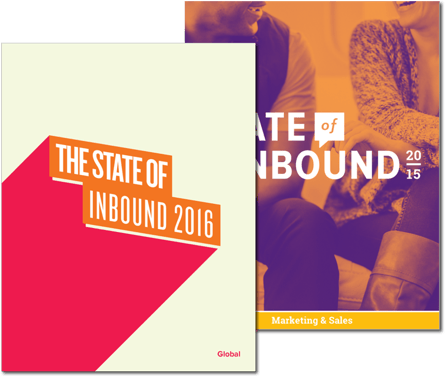Marketing & Sales as you currently know them will no longer exist in 5 years. That's a pretty bold statement, but all one has to do is look at recent history to understand how quickly things are changing and will continue to change:
- In 1996, the average person received 100 emails PER WEEK
- Today, the average person receives over 120 emails PER DAY
- In 1996, most phone communications took place on LAND LINES
- In 1996, there were no such things as messaging apps like WhatsApp, Viber, Facebook Messenger, WeChat, and TextFree
- Today, there have been 4 BILLION (yes, billion) downloads of messaging apps and mobile notifications are up 34% since 2015
- In 1996, social media didn't really exist (Classmates & Six Degrees came out in 1997, Friendster in 2002, and LinkedIn and MySpacein 2003)
- Today, 2 out of 3 adults use social media to keep up with the news
- Facebook users watch 8 BILLION (yes, billion with a "B") videos EVERY DAY
- SnapChat users watch 10 BILLION (yup, again, billion) videos EVERY DAY
Twenty years is not exactly overnight... but those 2016 statistics didn't exactly happen overnight either. Technology is becoming more mobile, more convenient, and more "human" and continues to change at breakneck speed — and it's changing the way we live, the way we communicate, and the way we buy.
So why is all of this important?
Because if you expect your customers to behave the way they have in the past, you will be left behind.
Even modern digital methodologies like Inbound Marketing have evolved in their relatively short existence. Initially, Inbound Marketing was centered around utilizing content to attract strangers to our website. It then became about turning those visitors into qualified leads. And as time went on, companies began applying the inbound methodology to turn qualified leads into customers and advocates for their brands, and that's where things changed.
Today, Inbound Marketing has a much broader conceptual definition. This from HubSpot:
"Inbound means transforming how we do business to be more helpful, more human, more empathetic. It focuses on the whole process of turning a stranger into a delighted customer. Inbound is about matching the way you market and sell with the way people actually want to shop and buy."
 |
|
|
Click to download FREE COPIES of the |
For eight years, HubSpot has been publishing its State of Inbound Report providing benchmark data, current trends, and predictions about where inbound is headed directionally. The 2016 edition is a collection and analysis of surveys from 4,500 respondents with varied marketing backgrounds in B2B, B2C, small, and mid-sized businesses from over 132 countries. Beyond the traditional benchmark data, this year's report goes a little further by attempting to predict the future of Inbound Marketing as well as emerging trends and technologies. The 2016 State (and Future) of Inbound holds some of the most informed predictions for the future of marketing and sales you’re likely to find. Here are some of the findings you'll read in the report:
- Today's Marketing & Sales Priorities: Marketers today are focused on converting the visitors they attract into leads and customers. Next is growing traffic to their website (check out our blog post about how much traffic your website shoul be getting to learn more), followed by increasing revenue from existing customers (upselling). Clearly, the mandate marketers received is this: keep the engine running with a keen eye toward monetizing marketing activities.
- The Undeniable Connection Between ROI & Budget: Measuring ROI has been a top challenge for marketers over the years, yet we consistently find that being able to prove ROI is crucial to a marketing team’s success. Those who can calculate ROI are 1.6x as likely to receive higher budgets.
- Overrated Marketing Tactics: (Hint, it’s outbound) This datapoint has stayed consistent year-over-year: Outbound Marketing (paid advertising) is considered the most overrated marketing tactic regardless of what kind of marketer you are. Check out our blog post about the difference between Inbound & Outbound Marketing to learn more about why many marketers consider Outbound Marketing to be overrated.
- The Future of Marketing: What will the future of marketing look like? Marketers are thinking hard about decentralized content and are experimenting with taking their content to new channels. Marketers are clearly accounting for video content’s rising popularity among global online browsers, with 48% planning on using YouTube and 39% looking to use Facebook video. Podcasts are enjoying a resurgence in popularity, and new channels like Instagram are in the marketer’s mix as well. 8% of marketers are even looking into posting content on Medium.
- Where Decision Makers Go for Information: When looking for information for business purchases, survey respondents trust word-of-mouth, customer references, and then media- and vendor-authored articles. Compared to last year, vendor-authored materials took a slight dip, while industry analyst recommendations dropped 12%.




